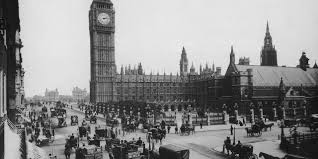“Causation in 19th Century Perspectives and Political Developments” – Everything You Need to Know
The 19th century was a period of dynamic transformation, where sweeping political reforms, rapid industrialization, and evolving intellectual ideas intertwined to reshape societies. At the heart of this transformation lies the concept of causation—the interplay of various forces that drove political and social change during this era. In this comprehensive guide on Causation in 19th Century Perspectives and Political Developments, we will explore the multiple factors that contributed to the dramatic shifts of the 1800s, examine the key ideologies and events that emerged, and discuss how these historical processes continue to influence our modern political landscape.
Introduction: Unraveling the Forces Behind Transformation
Imagine a time when entire nations were rethinking governance, when long-held political traditions were challenged by emerging ideas of democracy and equality, and when economic and social forces converged to reshape everyday life. Did you know that the political developments of the 19th century—such as the expansion of suffrage, the rise of constitutional governments, and the spread of nationalist thought—were not the result of a single event, but rather a complex interplay of multiple causes?
In this post on Causation in 19th Century Perspectives and Political Developments, we will cover:
- A Clear Definition: A concise yet thorough explanation of what causation means in the context of 19th-century politics.
- Historical Background: The origins, intellectual milestones, and critical events that set the stage for political change during the 1800s.
- In-Depth Exploration: Detailed analysis of the economic, social, ideological, and political factors that drove change, supported by real-world examples and case studies.
- Importance and Applications: The significance of understanding these causal relationships for modern governance, policy-making, and civic engagement.
- Common Misconceptions and FAQs: Addressing myths and clarifying misunderstandings about the complex forces of causation.
- Modern Relevance: How the lessons of the 19th century continue to inform contemporary debates and political developments.
- Call-to-Action: Encouraging further reading, discussion, and active engagement with the subject.
Understanding Causation in 19th Century Perspectives and Political Developments is crucial for appreciating how multifaceted forces can converge to produce sweeping reforms. This insight not only enriches our grasp of history but also equips us with tools to analyze and address modern political challenges.
What Is “Causation in 19th Century Perspectives and Political Developments”?
Defining the Concept
Causation in 19th Century Perspectives and Political Developments refers to the study of the complex interplay of factors—economic, social, ideological, and political—that drove the transformative changes in the 1800s. It examines how multiple causes, acting both independently and interactively, produced significant political developments such as:
Reform Movements and Constitutional Changes:
The expansion of the electorate, the establishment of parliamentary systems, and the gradual decline of absolute monarchies.Nationalism and State Formation:
The creation and unification of nation-states, often spurred by a shared sense of cultural identity and political ambition.Economic Transformation:
The shift from agrarian economies to industrial powerhouses, accompanied by the rise of capitalism and significant changes in labor and trade.Social and Intellectual Shifts:
Evolving ideas about individual rights, democracy, and social justice, as well as the impact of the Enlightenment and subsequent intellectual movements.
The essential characteristics of this causation include the interdependence of multiple factors, non-linearity in how these causes interacted, and the layered, sometimes contradictory, outcomes that emerged from the era’s political experiments.
Historical and Contextual Background
Setting the Stage for Change
Before the 19th century, political power was predominantly concentrated in monarchical and feudal systems, where loyalty was directed toward rulers rather than to a nation or a set of shared ideals. However, several pivotal developments set the stage for the dramatic transformations of the 1800s.
The Enlightenment and Revolutionary Thought
Intellectual Awakening:
The Enlightenment (17th–18th centuries) ushered in an era of critical thinking, emphasizing reason, individual rights, and the questioning of traditional authority. Philosophers like John Locke, Montesquieu, and Rousseau challenged the divine right of kings and proposed the idea of a social contract.Revolutionary Movements:
The American Revolution (1775–1783) and the French Revolution (1789–1799) were watershed events that translated Enlightenment ideas into radical political action. These revolutions laid the ideological groundwork for the spread of democratic principles and the reimagining of political power.
The Industrial Revolution: Economic and Social Catalyst
Economic Overhaul:
The advent of the Industrial Revolution fundamentally altered economic structures, shifting production from artisanal, localized methods to large-scale, mechanized manufacturing. This transition necessitated new forms of economic organization and created vast disparities in wealth and social status.Urbanization and Social Change:
As industrialization spurred mass migration from rural areas to cities, urban centers emerged as hubs of economic and political activity. This shift reshaped social dynamics, laying the foundation for modern labor movements and reform initiatives.Technological Innovations:
The development of steam power, railways, and telegraphs not only revolutionized industry but also transformed communication and transportation, making it easier for political ideas to spread and for reforms to be implemented across large areas.
Key Milestones and Anecdotes
The Reform Acts in Britain:
Beginning in 1832 and followed by further acts in 1867 and 1884, these legislative measures expanded the electorate and reformed parliamentary representation, setting the stage for modern democratic governance.Unification Movements in Europe:
The unification of Italy and Germany during the mid-19th century exemplifies how nationalist ideologies and political reforms could reshape entire regions. These processes involved both political negotiation and, at times, military conflict.Cultural and Intellectual Movements:
Movements such as Romanticism and Realism in the arts reflected the profound social and political changes of the era. They captured the emotional and intellectual responses to rapid industrialization and shifting power structures.
In-Depth Exploration / Main Body
To fully understand Causation in 19th Century Perspectives and Political Developments, we must break down the era’s major driving forces. Below, we explore the key factors in detail, using subheadings for clarity and incorporating real-world examples to illustrate these concepts.
1. Economic Forces and Political Change
a. The Impact of Industrialization
Economic Transformation:
The Industrial Revolution spurred unprecedented economic growth, transforming traditional agrarian economies into industrial powerhouses. This shift was not merely about technological innovation; it fundamentally altered the distribution of wealth, labor practices, and societal structures.New Economic Classes:
Industrialization led to the rise of a capitalist class, composed of industrialists and financiers, and a growing working class, whose demands for fair wages and better working conditions would drive significant political reforms.Case Study – Britain’s Industrial Revolution:
Britain’s transformation into the “workshop of the world” illustrates how industrialization catalyzed political change. The economic prosperity generated by industrial growth fueled demands for political reforms such as the extension of the franchise and the establishment of labor rights.
b. Capital Accumulation and Global Trade
Financial Innovations:
The accumulation of capital and the development of modern banking systems provided the resources needed for large-scale industrial projects and overseas expansion. These economic changes helped to reshape international trade, creating a more interconnected global market.Trade and Colonization:
As European nations sought new markets for their goods, economic imperatives drove them to establish colonies, which in turn influenced domestic political developments and international relations.Economic Legacies:
The global trade networks and economic dependencies established during this period have left lasting impacts, affecting modern economic policies and international power dynamics.
2. Political Reforms and Ideological Shifts
a. Expansion of Democratic Governance
Electoral Reforms:
The 19th century witnessed significant efforts to democratize political systems. Key reforms, such as the British Reform Acts, gradually expanded the electorate, reducing the concentration of power in the hands of a few and promoting broader political participation.Rise of Constitutionalism:
The move from absolute monarchies to constitutional governments was a hallmark of this era. New constitutions enshrined the principles of separation of powers, rule of law, and individual rights, laying the foundation for modern democratic systems.Real-World Impact:
These political reforms not only redefined governance but also influenced public discourse, inspiring further demands for social justice and civil rights.
b. Ideological Debates and Nationalism
Liberal Ideals:
Liberalism, with its emphasis on individual rights and representative government, became a driving force behind many of the reforms of the 19th century. Intellectual debates around liberalism shaped policies that expanded freedom and participation.Nationalism and State Formation:
The rise of nationalism was another powerful force during this period. It fueled the unification of fragmented states (e.g., Italy and Germany) and redefined political boundaries, influencing both domestic politics and international relations.Socialism and Reform:
In response to the inequalities wrought by industrial capitalism, socialist ideas emerged, advocating for economic and social reforms aimed at redistributing wealth and promoting collective welfare. These debates significantly influenced labor movements and the development of welfare policies.
c. Diplomatic Tensions and International Rivalries
Shifting Balance of Power:
The transformation of political systems in the 19th century led to new alliances and rivalries on the international stage. The emergence of powerful nation-states altered the balance of power, leading to diplomatic tensions that would eventually contribute to global conflicts.Case Study – The Unification of Germany:
Otto von Bismarck’s successful unification of Germany not only consolidated power within the German states but also disrupted the European balance, setting the stage for future diplomatic rivalries and conflicts.Legacy in Modern International Relations:
The diplomatic strategies and international conflicts of the 19th century continue to influence modern geopolitics, offering valuable lessons on the complexities of statecraft and alliance-building.
3. Social and Cultural Transformations
a. Urbanization and Social Change
Demographic Shifts:
Industrialization led to mass urbanization, as people migrated from rural areas to cities in search of work. This rapid urban growth reshaped social structures, giving rise to new classes and altering traditional family dynamics.Social Reform Movements:
The challenges of urban life—such as overcrowding, poverty, and public health crises—spurred numerous social reform movements. These movements aimed to improve living conditions, promote labor rights, and address social inequalities.Example – The Chartist Movement:
In Britain, the Chartist movement emerged as a response to the harsh realities of urban industrial society, demanding political reforms such as universal suffrage and improved labor laws.
b. Cultural and Intellectual Debates
Artistic Responses:
The cultural landscape of the 19th century was vibrant and multifaceted, with movements like Romanticism and Realism reflecting the emotional and social turmoil of the age. These artistic movements not only mirrored political changes but also influenced public opinion and political discourse.Literary Innovations:
The rise of the novel and other literary forms provided a platform for exploring social and political issues. Writers such as Charles Dickens, Fyodor Dostoevsky, and Victor Hugo used their works to critique social injustices and advocate for reform.Philosophical Impact:
Intellectual debates surrounding progress, modernity, and the role of the state in society were central to the 19th century. Thinkers like John Stuart Mill and Alexis de Tocqueville examined the challenges of democratic governance and the responsibilities of citizenship.
4. Interdisciplinary Perspectives on Causation
a. The Interplay of Economic, Social, and Political Factors
Complex Causation:
One of the key insights of studying 19th-century political developments is understanding that change was not driven by a single factor but by the interaction of multiple forces. Economic expansion, technological innovation, and social upheaval worked in tandem to reshape the political landscape.Feedback Loops:
For instance, economic growth spurred by industrialization created new social classes, which in turn demanded political reforms. These political changes then influenced further economic policies, creating a cycle of transformation.Case Study – The Industrial Revolution and Democratic Reforms:
The economic boom of the Industrial Revolution created both opportunities and challenges. The resulting social pressures led to democratic reforms, which then provided a stable political environment for continued economic development.
b. Analyzing Historical Causation
Methodological Approaches:
Historians and political scientists use a variety of methods to analyze causation, including comparative studies, statistical analyses, and qualitative research. Understanding these methods helps illuminate the complex pathways that led to the transformative events of the 19th century.Importance for Modern Analysis:
By examining historical causation, we can better understand contemporary political developments. Many of the debates and issues we see today—such as economic inequality, political representation, and cultural identity—have deep roots in the causal processes of the past.
Importance, Applications, and Benefits
Understanding Causation in 19th Century Perspectives and Political Developments is not merely an academic exercise—it has practical implications that continue to shape our world today:
a. Informing Modern Policy and Governance
- Guiding Reforms:
The lessons of 19th-century political change inform modern policy-making. By understanding how past reforms addressed social and economic challenges, contemporary governments can design policies that are both effective and inclusive. - Building Resilient Institutions:
Historical insights into institutional adaptation can help modern states build structures that are resilient in the face of rapid change and global challenges.
b. Enhancing Civic Engagement and Public Literacy
- Critical Thinking:
A deep understanding of historical causation fosters critical thinking skills, enabling citizens to analyze current events in a broader context. - Informed Debate:
Knowledge of the forces that shaped past political developments empowers individuals to participate meaningfully in public debates and civic life.
c. Driving Economic and Social Development
- Economic Lessons:
The interplay between economic growth and political reform in the 19th century provides valuable lessons for addressing modern challenges such as globalization and income inequality. - Social Equity:
Historical examples of social reform movements inform contemporary efforts to promote social justice and reduce disparities.
d. Global Relevance and Future Insights
- International Relations:
The diplomatic strategies and international conflicts of the 19th century continue to influence global politics. Understanding these dynamics is essential for building cooperative international frameworks and resolving conflicts. - Anticipating Future Trends:
By studying the causal mechanisms of past political developments, scholars and policymakers can better anticipate and respond to emerging challenges, ensuring that modern institutions remain adaptive and forward-thinking.
Addressing Common Misconceptions and FAQs
Despite its importance, several misconceptions about Causation in 19th Century Perspectives and Political Developments persist. Let’s clarify some common questions:
FAQ 1: Is it accurate to attribute 19th-century political change to a single cause?
- Misconception:
Some believe that a single event, such as the Industrial Revolution, can fully explain the political transformations of the 19th century. - Reality:
The causal landscape of the 19th century was complex and multifaceted. Economic, social, technological, and ideological factors all interacted in dynamic ways to produce political change.
FAQ 2: Are the lessons of 19th-century causation relevant only to historians?
- Misconception:
Critics sometimes argue that understanding historical causation is irrelevant to contemporary issues. - Reality:
The insights gained from analyzing historical causation are essential for modern policy-making, institutional reform, and civic engagement. They help us understand the roots of current challenges and guide future decisions.
FAQ 3: Did all 19th-century reforms result in positive outcomes?
- Misconception:
It is often assumed that every reform of the 19th century led to progressive change. - Reality:
Many reforms produced mixed results, with some successes and many unintended consequences. A nuanced understanding of causation helps us appreciate the complexity of political change.
FAQ 4: Can the methods used to analyze 19th-century causation be applied to modern political developments?
- Misconception:
Some believe that historical analysis methods are outdated in the face of contemporary challenges. - Reality:
The analytical frameworks developed by historians and political scientists remain highly relevant today, offering valuable tools for understanding both past and present political dynamics.
Modern Relevance and Current Trends
a. Applying Historical Insights to Modern Governance
Policy Innovation:
Modern policymakers can draw on the lessons of 19th-century reforms to design policies that are adaptive, inclusive, and resilient. By understanding the causes behind historical change, they can anticipate and mitigate potential pitfalls in contemporary reforms.Institutional Reform:
The challenges faced by 19th-century political institutions provide a roadmap for modern efforts to build more transparent and accountable systems of governance.
b. Economic and Social Challenges Today
Global Economic Shifts:
The economic transformations of the 19th century offer valuable insights into managing modern issues such as globalization, market volatility, and income inequality.Social Equity and Justice:
The historical interplay between economic development and social reform informs current debates on social justice, labor rights, and public welfare.
c. Intellectual and Cultural Debates
Modern Ideological Conflicts:
The ideological battles of the 19th century—between liberalism, nationalism, socialism, and conservatism—continue to shape modern political discourse. Understanding these debates helps clarify current issues around governance and identity.Cultural Resonance:
The cultural and intellectual movements of the 19th century continue to inspire art, literature, and public discourse, influencing everything from education to social media narratives.
d. Anticipating Future Transformations
Predictive Value:
Analyzing the causal mechanisms of past political developments equips us with the tools to forecast future trends. As societies confront challenges like technological disruption, environmental crises, and shifting global power dynamics, historical insights remain invaluable.Interdisciplinary Approaches:
The study of causation in the 19th century encourages interdisciplinary research that integrates economics, sociology, political science, and cultural studies—an approach that is increasingly vital in our interconnected world.
Conclusion: The Enduring Power of Causation in Shaping Political Change
Summarizing the Key Points
Causation in 19th Century Perspectives and Political Developments is a complex and multifaceted topic that reveals how a confluence of economic, social, technological, and ideological factors drove transformative political changes. Key takeaways include:
- Complex Interactions:
Political change in the 19th century resulted from the dynamic interplay of multiple factors, rather than from a single cause. - Enduring Legacy:
The reforms, institutions, and ideological debates of the 19th century have left a lasting imprint on modern governance and political thought. - Modern Applications:
Insights into historical causation inform contemporary policy-making, international relations, and civic engagement, helping us navigate today’s complex political landscape. - Empowerment Through Knowledge:
A nuanced understanding of the forces behind historical political change equips us to better address current challenges and anticipate future trends.
Reinforcing the Importance of Understanding Causation
Grasping Causation in 19th Century Perspectives and Political Developments is essential for anyone who wishes to understand the origins of modern political systems and the dynamics that continue to shape our world. By studying the multifaceted causes behind historical reforms, we gain valuable insights that are applicable to modern challenges, from policy design to global diplomacy.
A Call-to-Action
We invite you to:
- Explore Further:
Delve into classic texts, academic research, and documentaries on 19th-century history to deepen your understanding of the factors that drove political transformation. - Engage in Discussion:
Share your thoughts, questions, and reflections in the comments below or on our social media platforms. How do you see the legacy of 19th-century causation influencing modern politics in your community or country? - Stay Informed:
Subscribe to our newsletter for more in-depth articles on historical transformations, political ideologies, and the evolution of modern governance. Your active participation is key to building a community of well-informed citizens ready to tackle today’s global challenges.
Additional Resources and Further Reading
For those eager to expand their knowledge on Causation in 19th Century Perspectives and Political Developments, consider these reputable sources:
Books and Academic Journals:
- The Age of Revolution: 1789-1848 by Eric Hobsbawm
- Modernity: An Introduction to Modern Societies by George Ritzer
- On Liberty by John Stuart Mill
- Scholarly articles in journals such as The Journal of Modern History and Political Theory.
Digital Archives and Museums:
- The Digital Public Library of America (DPLA) for primary documents and historical artifacts related to 19th-century political reforms.
- Europeana Collections, featuring digitized manuscripts, images, and records from the 19th century.
Government and Educational Websites:
- Resources from the U.S. Library of Congress and the British Library.
- Online courses and lectures on platforms like Coursera, edX, and Khan Academy covering modern history and political developments.
Interactive Timelines and Documentaries:
- Multimedia timelines on History.com illustrating key milestones in political reform and causation.
- Documentaries available on PBS, Netflix, or YouTube exploring the transformations of the 19th century and their enduring impact on modern society.
Final Thoughts
The exploration of Causation in 19th Century Perspectives and Political Developments reveals a rich, intricate tapestry of forces that have shaped our modern political world. By dissecting the economic, social, ideological, and technological factors that drove the sweeping reforms of the 1800s, we not only gain a deeper understanding of our past but also learn valuable lessons for addressing contemporary challenges. The legacy of 19th-century political change is a testament to the power of human ingenuity, resilience, and the capacity for transformation—lessons that remain as relevant today as they were two centuries ago.
Thank you for joining us on this comprehensive journey through one of history’s most transformative eras. If you found this post insightful, please share it with friends, colleagues, and anyone interested in understanding how the causes behind historical political developments continue to influence our modern society. Let’s keep the conversation going and work together to build a more informed and engaged future.







